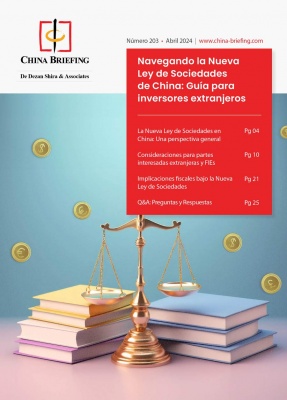Will China’s Property Prices Reach a Ceiling Under Restrictive Policies?
By Vivian Ni
Jun. 7 – Since last September, the Chinese government has launched a series of restrictive policies on the country’s fast growing property market, hoping to make housing more affordable to its 1.3 billion people and bring down high inflationary pressure. The policies, often commented as being “unprecedentedly stringent,” are relevant to the interests of multiple groups, including property developers, local governments, and prospective real estate purchasers. In the complicated interest game, it remains to be seen whether or not a ceiling to the surging property prices will finally emerge.
Presently, China’s control measures on its property market cover the following aspects:
- Restrictions on second home purchases: expanded to almost every municipality, provincial capital city and special zone, with detailed regulations varying across different areas
- Property tax: implemented since January in two pilot areas – Shanghai and Chongqing, with an impact milder than expected
- Affordable housing supply: targeting supply of another 10 million units in 2011 – a 58 percent increase from 2010 – to alleviate the demand-supply tension in the residential housing market
- Control over bank loan issuance: further tightened with the constricted lending management among commercial banks and the frequent raises in reserve requirement ratio, which currently stands at 20.5 percent
While the above-mentioned restrictive policies have made many property buyers wait and see with the hope that housing prices may decline in the near future, real estate developers – especially large-scale ones – do not seem to be panicking yet, and are hesitating to offer discounts on their waiting-for-sale floor space which has tied up massive funds.
However, the stalemate in the ordinary residential housing market has not stopped the rising trend of luxury residential property prices in most of China’s major cities. According to a China Retail MarketView report of Quarter I (2011) issued by the international real estate service company CB Richard Ellis (CBRE), over the first three months of this year – the period that is usually regarded as a slack season – the luxury residential market has seen a mild 3 percent increase in prices across most cities the report tracks. The market did not show much concern over the policy headwind, seeing that most of the restrictive measures are used to stabilize the market in the long term.
The administrative pressure from the central government on China’s residential market has also been somewhat transferred on tenants – instead of property developers themselves – for the time being. While trading volume is going down and prices stay firm, luxury residential rentals in most cities have been on the rise at quarter-on-quarter growth rates ranging from 0.5 percent to 6.7 percent during the first quarter, the CBRE report says.
While the restrictive policies may have hit the residential property markets in China’s first-tier cities a bit harder, leading to a conservative market performance in those cities, opportunities in second and third-tier cities have attracted an increasing number of property developers looking to shift their investment emphasis. Statistics from the Centaline Property Agency Limited, one of the largest property agencies based in Hong Kong, show that the land reserves of China’s top 10 property developers in second and third-tier cities have reached 174.8 million square meters last year, 4.3 times more than their 41 million square meter land reserves in first-tier cities.
As property developers rush to second and third-tier cities, experts see risks of a new housing bubble emerging in those areas, as a result of the emerging markets’ attraction to buyers and speculators. According to a recent report on Economic Information, a newspaper charged by Xinhua News Agency, property prices in the downtown area of some county-level cities in Fujian Province are already approaching RMB10,000 per square meter, surging from the RMB2,000 to RMB3,000-rate two year ago. In some other county-level cities in south Jiangsu Province such as Kunshan and Taicang, the property market – which meets the demand of buyers who cannot afford Shanghai’s high real estate rates – has also seen its prices march closer to RMB10,000 per square meter.
News that total land premiums across China’s 128 cities have declined by 5 percent between January and May of 2011 signals restrictive policies may have put an end to last year’s land mania. In turn, the decrease may threaten local governments’ fiscal revenue, which is largely dependent on income from land sales. The contradiction between the central government’s policies and local governments’ interest may cloud the real estate price prospect. Already there is talk in cities like Haikou and Dalian – where land premiums shrunk by 81 percent and 27 percent respectively during the first five months this year – that local governments may want to relax home purchase restrictions.
While it is common knowledge a “housing bubble” will always burst or seek a soft-landing somewhere, everyone’s opinion on a bubble differs. Property developers emphasize China’s huge population and its “rigid demand” that exceeds supply, while most common Chinese buyers complain about the low affordability of houses and the speculative investment that has driven property prices skywards. Meanwhile local governments are showing a more cautious attitude towards the development of the property market in an attempt to strike a balance between fiscal revenue and social stability. In short, it will take time to see who in the property market will finally win the interest game.
Related Reading
U.S. Study Mission Discusses China’s Inflation, Living Costs and the Conspicuous ‘Housing Bubble’
Property Prices May Decline in Mumbai. What about Shanghai?
Can RRR Raises Really Absorb China’s Excess Liquidity and Inflation?
Foreign Participation Surges in China’s Property Development
- Previous Article China Renewable Energy Industry Report: Jun. 7
- Next Article China Renewable Energy Industry Report: Jun. 13
























